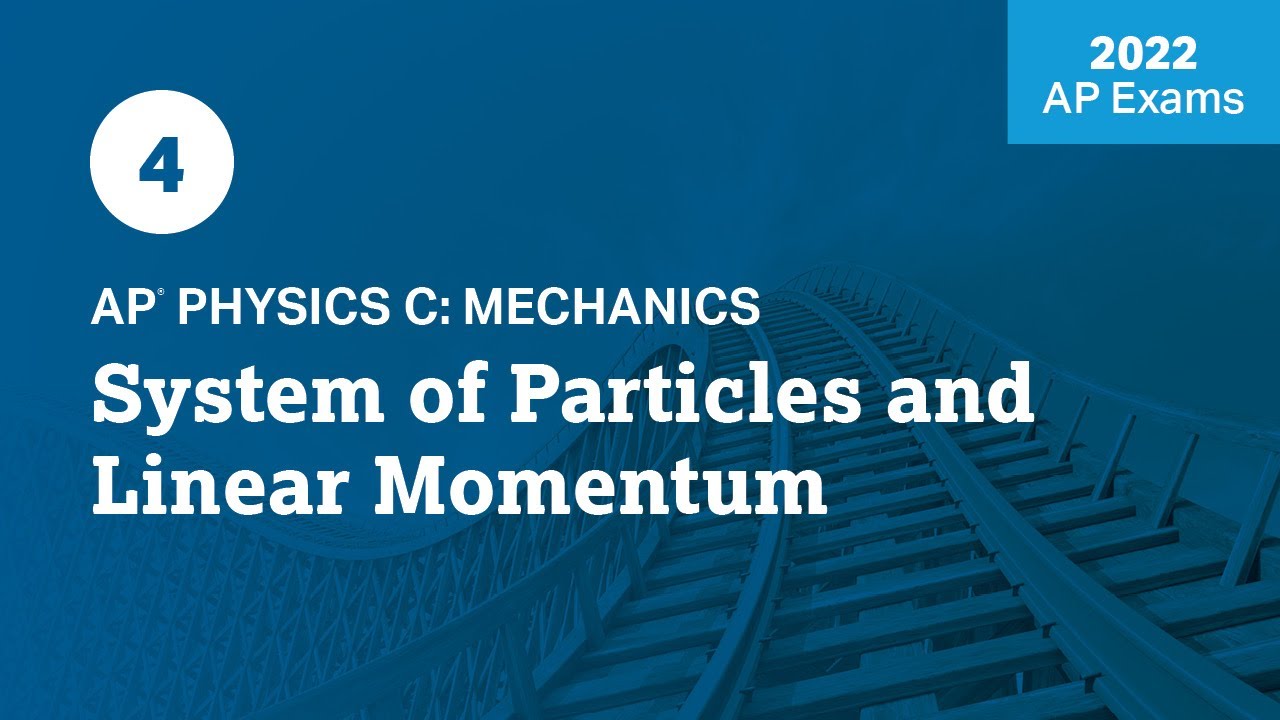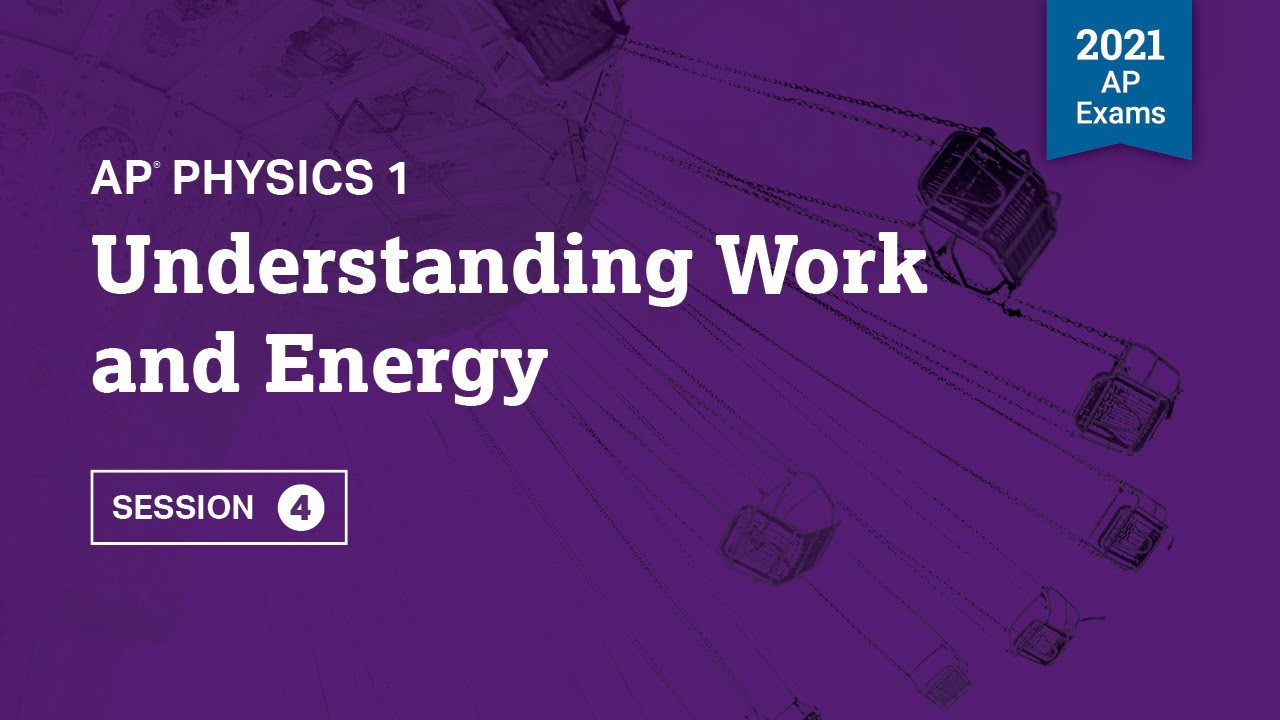1 | MCQ | Practice Sessions | AP Physics C: Mechanics
TLDRIn this educational video, Dr. Julie Hood from Mast Academy in Miami, Florida, guides viewers through multiple-choice physics problems focused on the concept of momentum. She emphasizes the importance of understanding momentum as a conserved quantity, which can be altered by external forces, or impulse. The video includes practical examples and problem-solving strategies, such as calculating the change in momentum and its implications in various scenarios like collisions and explosions. Dr. Hood encourages students to familiarize themselves with key equations and practice problems to excel in their AP Physics exams.
Takeaways
- 📚 Momentum is a powerful conservation law in physics, often overlooked but essential for solving problems involving changes in motion.
- 🔍 Momentum is defined as mass times velocity and is a vector quantity, meaning it has both magnitude and direction.
- 🚀 The conservation of momentum can be disrupted by an external force, which imparts an impulse to the system, resulting in a change in momentum.
- 📈 Impulse (J) is represented by the integral of force (F) with respect to time (dt), and force is the derivative of momentum with respect to time.
- 📝 Familiarity with the equation sheet is crucial, as key equations related to momentum and impulse are provided there for reference.
- 🔄 To find the direction of the average force exerted in a collision, consider the change in velocity, which dictates the direction of the force.
- 🔄 In collisions, momentum is conserved, and the total momentum before and after the collision must be equal if no external forces are present.
- 💥 In an explosion, momentum is still conserved as it is an internal process within the system, without the addition of external forces.
- 🧩 For problems involving forces over time, such as determining the final speed of an object, the impulse-momentum theorem can be applied by integrating the force function over time.
- 🔢 Dimensional analysis is a powerful tool for solving physics problems, as demonstrated when calculating the force needed to hold a fire extinguisher steady while it operates.
- 📊 Understanding the concept of impulse and its relation to changes in momentum can be visualized by calculating the area under the force-time graph, which represents the total change in momentum.
Q & A
What is the fundamental concept of momentum discussed in the video?
-Momentum is a powerful conservation law defined as mass times velocity, and it is a vector quantity that is conserved in a system unless acted upon by an external force.
What is the relationship between impulse and change in momentum?
-Impulse is the change in momentum of an object and is equal to the integral of force with respect to time (∫F dt). It represents the effect of a force applied over a period of time on an object's momentum.
How does the video explain the direction of the average force exerted by a stick on a ball?
-The video explains that the direction of the average force exerted by a stick on a ball is parallel to the change in velocity of the ball, which can be found by subtracting the initial velocity vector from the final velocity vector.
What is the significance of the momentum conservation law in collisions?
-The momentum conservation law states that the total momentum of a system remains constant before and after a collision, provided there are no external forces acting on the system.
How can you determine the final momentum of two objects after a collision using the given choices in the video?
-By adding the momenta of the two objects in each potential answer choice and checking if the sum equals the initial total momentum of the system before the collision.
What is the difference between momentum and kinetic energy in the context of collisions?
-While momentum is always conserved in collisions, kinetic energy may not be, as it can be converted into other forms of energy in inelastic collisions.
How does the video illustrate the calculation of the speed of another piece in an explosion where one piece's speed and mass fraction are known?
-By using the conservation of momentum principle, the video shows that the speed of the unknown piece can be calculated by considering the mass fraction and the speed of the known piece moving in the opposite direction.
What is the total kinetic energy before a collision involving two pucks moving in perpendicular directions?
-The total kinetic energy before the collision is the sum of the kinetic energies of both pucks, calculated by adding the squares of their individual speeds and then taking the square root.
How can you find the magnitude of the total momentum of a two-puck system after a collision?
-By using the Pythagorean theorem to find the vector sum of the initial momenta of the two pucks, which will give the magnitude of the total momentum after the collision.
What is the horizontal force a person must exert on a fire extinguisher to prevent it from accelerating when it ejects water?
-The force is equal to the mass flow rate of the water (1 kg/s) times its ejection speed (6 m/s), which results in a force of 6 newtons.
How does the video demonstrate the calculation of the change in momentum for an object under a variable force over time?
-By integrating the force function over the given time interval and equating it to the impulse, which is the change in momentum, the video shows that the area under the curve represents the total change in momentum.
Outlines
📚 Momentum and Impulse in Physics
Dr. Julie Hood introduces a video session focused on practicing multiple-choice questions related to momentum, a fundamental concept in physics. She explains that momentum, the product of mass and velocity, is a conserved vector quantity, which can be changed by an external force or impulse. Dr. Hood emphasizes the importance of understanding the relationship between force, time, and change in momentum, and encourages viewers to download the PDF for practice. She also illustrates how to determine the direction of the average force exerted on a ball by a stick using vector subtraction and the concept of impulse.
🚀 Applying Momentum Conservation in Collision Problems
The second paragraph delves into applying the conservation of momentum to collision problems. Dr. Hood guides viewers through problems involving objects colliding and changing momentum, using vector addition to find the correct outcomes. She discusses the difference between perfectly elastic collisions where kinetic energy is conserved and inelastic collisions where it is not. The paragraph includes solving for the unknown velocity of an object's fragment post-explosion, using the conservation of momentum principle, and a two-dimensional collision problem on an air table involving calculating kinetic energy and total momentum magnitude.
🔍 Determining Change in Momentum and Force Analysis
In the third paragraph, Dr. Hood explores scenarios where the force and time of action are known, and their implications on an object's momentum. She explains that knowing a constant force and the time it acts allows one to calculate the change in momentum. The paragraph includes a problem involving a 5-kilogram object propelled by a time-varying force, where the final speed of the object is determined by integrating the force function over time and dividing by the object's mass. Additionally, a practical problem of a person holding a fire extinguisher ejecting water is presented, requiring the calculation of the horizontal force needed to prevent the extinguisher from accelerating, using dimensional analysis.
📉 Calculating Momentum Change from Force-Time Graphs
The final paragraph discusses how to determine the total change in momentum from a force-time graph, where the area under the curve represents the impulse. Dr. Hood explains that the change in momentum is found by summing the areas of the rectangles under the graph, which in the given example results in no change in momentum due to the cancellation of positive and negative areas. She wraps up the session by summarizing the key takeaways, emphasizing the importance of recognizing collisions, understanding momentum conservation, and identifying impulse in problems.
Mindmap
Keywords
💡Momentum
💡Conservation Law
💡Impulse
💡Force
💡Velocity
💡Acceleration
💡Collision
💡Kinetic Energy
💡Explosive Forces
💡Frictionless Surface
💡Dimensional Analysis
Highlights
Dr. Julie Hood introduces herself as an AP Physics teacher from Mast Academy in Miami, Florida.
The video focuses on practicing multiple choice questions about momentum.
Momentum is described as a powerful conservation law that is often overlooked.
A link is provided for viewers to download a PDF of questions featured in the session.
Momentum is defined as mass times velocity and is a conserved vector quantity.
External forces can change the momentum of a system through impulse.
Impulse is represented by the letter J and is the integral of force over time (F dt).
The force is the derivative of momentum with respect to time, a key concept for solving problems.
Equations related to impulse and momentum are provided for students to use.
A problem-solving approach is demonstrated using Newton's second law and vector subtraction.
The importance of understanding the direction of force exerted on an object is emphasized.
A method for determining the correct vector representing force after a collision is explained.
Conservation of momentum is a central theme in solving collision problems.
A step-by-step guide on how to find the momentum after a collision is provided.
The difference between momentum and kinetic energy conservation in collisions is discussed.
An example problem illustrates how to find the speed of an object after an explosion using conservation of momentum.
A two-dimensional collision problem is solved, showing how to calculate total kinetic energy and momentum magnitude.
The relationship between force, time, and change in momentum is explored in a problem involving a constant force.
An example of calculating the speed of an object after applying a time-varying force is given.
The concept of dimensional analysis is used to determine the force needed to hold a fire extinguisher steady.
A graphical method for finding the change in momentum by calculating the area under a force-time graph is demonstrated.
The importance of understanding whether a problem involves a closed system for momentum conservation is highlighted.
The video concludes with a summary of key takeaways about momentum and impulse.
Transcripts
Browse More Related Video

2022 Live Review 4 | AP Physics C: Mechanics | System of Particles and Linear Momentum

3 | FRQ | Practice Sessions | AP Physics C: Mechanics

AP Daily: AP Physics C: Mechanics (1.1)

2 | FRQ | Practice Sessions | AP Physics C: Mechanics

2021 Live Review 4 | AP Physics 1 | Understanding Work and Energy

2022 Live Review 5 | AP Physics 1 | Understanding Impulse and Momentum
5.0 / 5 (0 votes)
Thanks for rating: